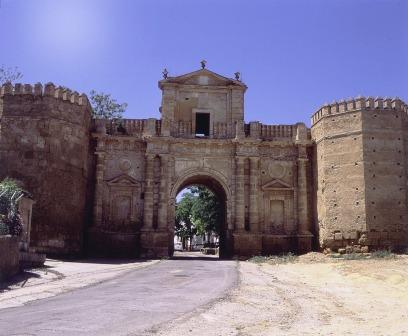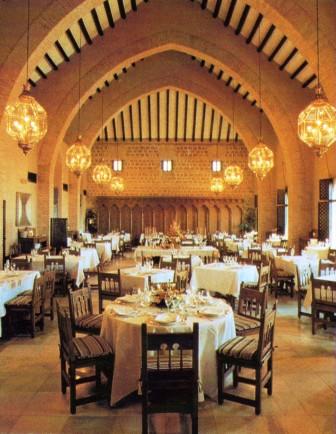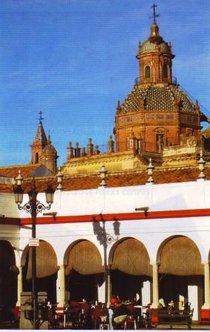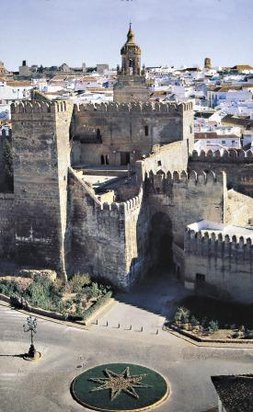
Costa del sol bjuder på många dina utflyktsmål.
Läs om mina förslag på vackra bergsturer.
Välkommen till min webbsida som handlar om trivsamma platser i Europa, utflykter i Andalusien och sköna promenader i Stockholm.
Klicka på det som intresserar dig!
Trevlig läsning

E5, A4, 2 km south of exit Carmona
Carmona is an ancient town, one of the oldest in Spain. It has a strategically advantageous position on a natural plateau in the middle of the fertile Guadalquivir valley on the road between Córdoba and Seville.
Now the motorway sweeps past the outskirts of the town, but in Roman times “Via Augusta” went right through the walled city via the two town gates Puerta de Córdoba and Puerta de Sevilla, which even today leads into the old town centre. Once you are through the town wall the streets wind their way in much the same pattern as way back and it is so nice just to stroll up and down at leisure; here stands a Gothic church, over there a renaissance façade suddenly pops up or a beautiful square comes into view, with a richly ornamented baroque palace to boot.

ONE TOWN – MANY PEOPLES
And the town has more to offer: there are traces of people living in Carmona as far back as half a million years ago. But let us begin with the Bronze Age, when the tartesses lived here in round huts with a street network similar to that of today and already fenced in by defence walls. The Fenicians arrived during the 9th century B.C. and the Carthaginians were here for a shorter period during the third century B.C. when they built a fortress at Puerta del Sol. But the Romans, who took Carmona in 206 B.C., made a more lasting impression. They built a forum, a theatre, an amphitheatre and thermal baths. Outside the walls – as was the custom in Roman towns – they had their “cemetery’”, and a considerable part of this necropolis is preserved to this day. No fewer than 800 graves from the second to the fourth century B.C. have been discovered, and of these the Elephant and Servilia graves are the most notable. Both were once like large villas with inner quadrangles surrounded by rooms for different religious ceremonies.
AN EARLY MUSLIM STRONGHOLD
When the Muslims started to invade the Iberian peninsula in the year 711 Carmona was one of the first towns to be seized. This happened as early as 713 and the Arabs have left several traces, as is evident from architectural details in many of the buildings of the town. Puerta de Sevilla was rebuilt during the Arabic era and constitutes part of Alcázar de Abajo, the nether fortress, as opposed to the upper fortress, Alcázar de Arriba. This fortress, which stands at the opposite end of the town up on the mountain, also bears the name Alcázar del Rey Don Pedro. It is now in ruins, but in the 14th century it was transformed by King Pedro I into a proper royal palace, from which later Ferdinand and Isabella were able to follow the long-drawn siege of Granada. Up here you can now live in style in a Parador, a hotel, which is housed in a restored part of the fortress. The Arabs naturally built themselves a mosque right in the middle of town, where now the 15th century Gothic church Santa Maria la Mayor rises proudly. Remaining from the Arabic era is Patio de los Naranjos with its attractive horseshoe arches.

RENAISSANCE AND BAROQUE
In the centre of town lies Plaza de San Fernando, surrounded by beautiful houses from the 17th and 18th centuries. Prominent among theses are the Town Hall with its vast floor mosaic of a Medusa head, and Cabildo Antiguo, the oldest house on the square, built as early as the 15th century, with a handsome renaissance façade. But it was really the baroque fashion that was prevalent when the noble families of the town built their palaces in the 18th century. More or less every street in Carmona displays one or more houses with richly adorned stone portals, hinting at a true baroque palace behind its walls. If you don’t fancy trekking all the way up to Don Pedro’s old castle for night-quarters, and maybe feel like staying somewhere a bit more “modern”, you can always choose a palace: Casa de Carmona or Alcázar de la Reina in Plaza de Lasso will both offer you a really comfortable stay with atmosphere.
PLAZA DEL MERCADO
Not far from Plaza de San Fernando is Plaza del Mercado, the Market Square, surrounded by arcades offering a great assortment of products from the rich agricultural country around Carmona. The fertile soil of the region and the rivers to water it have sustained Carmona’s citizens generously throughout history.

The dining-hall in the parador offers good food in stately surroundings
Plaza del Mercado with the Salvador Church as a striking backdrop
The city wall around Carmona has been subjected to many an onslaught over the years, but still it stands more or less intact
CARMONA